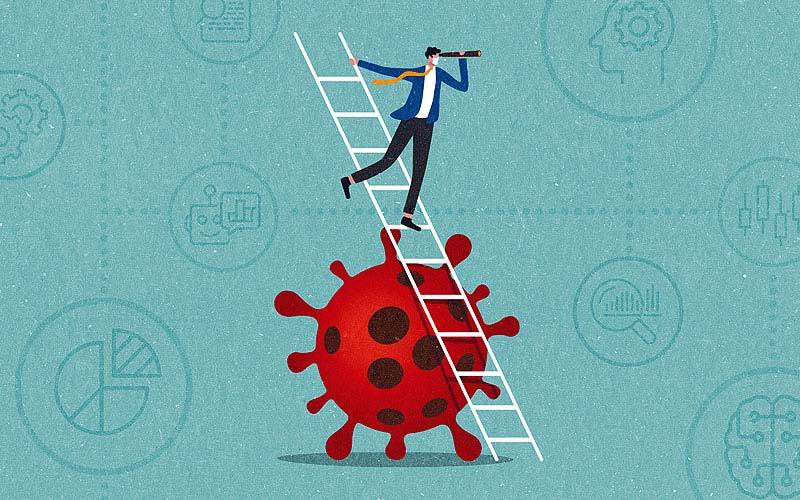Industry Trends
Marketing Insights
Like most organizations, the Home Improvement Research Institute (HIRI) had to reimagine its signature event in light of the COVID-19 pandemic. Normally held in Chicago, the annual summit went virtual this year. After speaking at the event in past years, we tuned in from our desks in Charlotte for three days of talks by home improvement research experts. Topics included market drivers and forecasts as well as insights on pro and DIY customers, channels and economics.
Did you miss the conference, or do you need a quick refresher? Here are 10 quick takes from the Wray Ward Insights team.
1. A renewed interest in home improvement projects should last a while.
RBC Capital’s Josh Rosenbaum said this trend is already having a significant impact on construction markets. Vacation cancellations due to COVID-19 are shifting some savings toward home improvement. And with the combination of aging housing stock, insufficient new build inventory and people focusing on aging in place, home improvement’s uptick is likely here for an extended stay.
2. These aren’t your dad’s DIYers.
The classic DIY homeowner is on the comedown. That’s because skills aren’t being passed down from generation to generation like they’ve traditionally been done, creating a knowledge barrier among younger homeowners. This could also be at least partly due to homeowner demographics becoming more heavily female. In his talk, Trusted Media Brands Inc.’s Nick Grzechowiak hit on the modern evolution of home improvement and DIY as well as a trend he calls home-basing. According to Grzechowiak, home-basing is the act of staying in (versus going out) to share experiences with family and friends — a necessity during the pandemic that has spurred a renewed focus on home and home improvement.
3. DIY shopping signs point to delivery.
The Farnsworth Group’s Grant Farnsworth shared that DIY consumers are purchasing their home improvement materials mostly in-store and online for delivery directly to their home.
4. DIY shoppers are more open to trying new brands.
Farnsworth also noted that more DIY consumers are purchasing new brands of building materials in 2020, likely due to a decrease in availability of their tried-and-tested products. Leading brands have some ground to make up in the supply chain department. Meanwhile, challenger brands have a golden opportunity to get their foot in the door.
5. It’s how consumers shop, not where.
The NPD Group’s Joe Derochowski reported interesting retail observations during lockdown.
- Branding personalization: The pandemic has created a unique opportunity for brands to create a deeper connection with consumers by appealing to their emotions.
- Livestream shopping: This is a chance for brands to tell their story quickly, in turn allowing consumers to learn about their product and buy it immediately.
- There’s been an increased focus on the kitchen, since it’s the traditional hub of the home and people are spending more time there.
6. Successful brands are using digital channels to drive sales.
Convenience? Check. Easy for me? Check. Friction-free? Check. These are the experience drivers that will support sales, and they start with digital channels.
Not ready to go all in? Venveo’s Zach Williams says being courageous in your marketing can help you come out on top and ahead of your competitors. That’s because many companies have scaled back their advertising and media budgets during the economic downturn fueled largely by COVID-19. Meanwhile, those companies that have maintained their advertising budget and provided a seamless, convenient shopping experience have seen a boost in sales. One-click buying, easy payment plans and generous return policies are benefiting the brands that offer them and their customers.
In the words of Warren Buffett, Williams told attendees, “Be greedy when others are fearful and be fearful when others are greedy.”
7. Baby boomers are about to have a huge effect on the housing market.
And it may not be for the reasons you’re thinking about. Issi Romem of MetroSight says an entire generation of baby boomers is on the cusp of passing away, transitioning to retirement or moving into nursing homes. This so-called Silver Tsunami will release a wave of additional homes into the market, and these homes will be in need of renovation or repair (see #1).
8. The pandemic is redefining what constitutes a healthy home.
Among other things, the coronavirus is impacting consumers’ perception of what makes a home healthy. The pandemic-driven shift is already influencing home design and won’t fade anytime soon.
9. The American household has a new look.
Did we mention COVID-19? In 2020, this public health crisis is also reshaping American households. Children are moving back home with parents, while older family members are moving in with their grown children instead of transitioning into nursing homes. Jessica Lautz of the National Association of REALTORS says homeowners are remodeling or renovating their homes to accommodate shifting demographics and loved ones’ varied needs.
10. The economic crisis could drive generational spending habits for decades.
Todd Tomalak and Mikaela Sharp from John Burns Real Estate Consulting told HIRI Summit attendees that younger generations experiencing life in a pandemic — with less financial security than their parents at the same age — could drive a major shift in spending habits, preferences and housing trends. Tomalak and Sharp said consumer perception of what constitutes a must-have is changing, with wish list items including larger backyards and more square footage for home office space potentially rising to the top.
Want to stay ahead of the rapidly evolving forces shaping the home improvement industry? It starts with a strong strategic foundation. Email me to get started.


